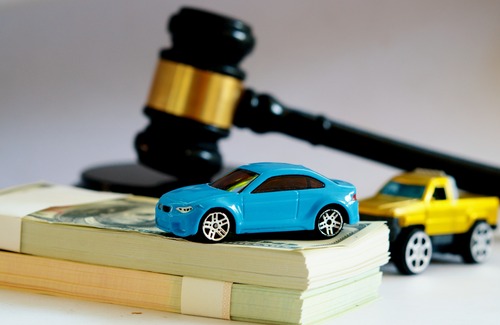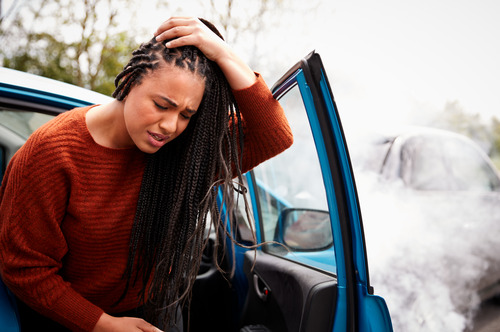At Atlanta Metro Law, we’re all about making sure you get the best legal help when you need it most. Whether you’ve been in a hit and run accident or any other personal injury situation, we’ve got your back. We know the ins and outs of Georgia law and are here to make sure you get the compensation you deserve. Our team is dedicated to guiding you through every step of the process, with no stress or confusion. We’re here to listen, answer your questions, and fight for your rights.
If you’ve been involved in a hit and run accident in Georgia, it can be an overwhelming and confusing experience. Not only are you left to deal with the physical and emotional impact of the crash, but the financial strain from medical expenses, property damage, and lost wages can quickly add up. Fortunately, Georgia law offers protections for victims, allowing you to seek hit and run compensation for your losses.
In this blog, we will walk you through the steps to take after a hit and run accident, the types of compensation you may be entitled to, and how working with an experienced Atlanta hit and run accident lawyer can help ensure you receive the financial recovery you deserve.
What Constitutes a Hit and Run Incident?
A hit and run incident occurs when a driver causes an accident and leaves the scene without providing necessary information or helping the injured. Understanding the key elements of a hit and run can help victims take appropriate steps to seek compensation.
Definition of a Hit and Run
A hit and run incident is defined by Georgia law as an accident where a driver leaves the scene without identifying themselves, offering assistance, or reporting the crash to law enforcement. This can apply to both car accidents and incidents involving pedestrians or property damage. The driver involved in a hit and run is legally required to stop, exchange information, and assist the injured.
Legal Obligations of the At-Fault Driver
Georgia law mandates that the at-fault driver remain at the scene of the accident. They must provide their name, address, and driver’s license number to those involved in the accident. If there are injuries, the driver must ensure that medical assistance is provided. Failure to do so can result in serious legal consequences, including criminal charges for leaving the scene of an accident.
Consequences of Leaving the Scene
When a driver leaves the scene, they face both criminal and civil penalties. Legally, leaving the scene without fulfilling these obligations is a hit and run offense. The driver may be subject to fines, license suspension, and even jail time. Victims of a hit and run accident may also pursue a personal injury lawsuit to seek hit and run compensation for medical expenses and property damage.
How to Handle a Hit and Run Incident
If you’re involved in a hit and run accident, it’s important to contact law enforcement immediately and file a police report. Gathering evidence, such as surveillance footage or witness statements, can be crucial. Victims should also notify their own insurance company, especially if they have uninsured motorist coverage. This coverage can help with medical expenses, property damage, and lost wages if the at-fault driver is not found.
The Legal Process Following a Hit and Run Accident
After an accident, it’s crucial to follow a clear legal process to ensure you receive the hit and run compensation you deserve. Here’s a step-by-step guide to handling the situation.
1. Contact Law Enforcement
The first step after a hit and run incident is to contact law enforcement. Filing a police report is necessary for both documenting the accident and helping authorities track down the hit and run driver. The police report will also be essential for your hit and run claim with your insurance company and may be used in a personal injury lawsuit.
2. Seek Medical Attention
Regardless of the severity of the accident, it’s important to seek immediate medical attention. Injuries from hit and run accidents may not always be immediately obvious, and medical records will support your claim for medical bills and other damages. Documenting injuries helps strengthen your case for a fair settlement later on.
3. Notify Your Insurance Company
If the driver who caused the accident cannot be found, your next step is to contact your own insurance company. In cases where the hit and run driver is unidentified, your uninsured motorist coverage may cover the costs of medical expenses, property damage, and lost wages. Review your insurance coverage details to understand what hit and run compensation you can expect.
4. Gather Evidence
Evidence plays a crucial role in hit and run cases. If possible, gather any available surveillance footage or witness testimony that can help identify the responsible driver. This can also aid in proving liability in the hit and run claim and increase your chances of a successful personal injury lawsuit. Be sure to keep all relevant documentation, such as medical records and repair invoices, for your case.
5. Legal Representation
In a hit and run accident, hiring an experienced personal injury lawyer can help navigate the legal process. A lawyer can assist you in pursuing a car accident lawsuit, negotiating with your insurance company, and ensuring that you receive fair hit and run compensation for medical bills, property damage, and emotional distress. Legal representation can increase the likelihood of recovering full hit and run compensation from the at-fault party or their insurance company.
6. Filing a Claim or Lawsuit
Once you have collected sufficient evidence, your personal injury lawyer will help you file a claim with your insurance company or, if necessary, proceed with a personal injury lawsuit against the responsible party. In cases where the driver is found, you may pursue hit and run compensation from their driver’s insurance company. Your attorney will guide you through each step, ensuring you don’t miss any deadlines for filing your claim.
Seeking Hit and Run Compensation: Various Damages You Can Recover
After a hit and run accident, victims can recover various types of damages to help cover their expenses. These damages can address both financial losses and emotional distress caused by the incident.
1. Economic Damages
Economic damages are the direct financial losses resulting from the hit and run accident. These can include medical bills for immediate care and ongoing treatment, repair costs for your vehicle, and lost wages due to missed work. If you have significant medical expenses or severe injuries, these damages can be substantial and are essential for covering your recovery costs.
2. Medical Expenses
Medical expenses are a key part of the damages you can recover. If you sustained injuries in a hit and run, your medical bills can quickly add up. This includes the costs of emergency treatment, hospital stays, surgery, medication, physical therapy, and future medical needs. If the hit and run driver is not found, uninsured motorist coverage may help cover these expenses.
3. Property Damage
In a hit and run car accident, property damage is often one of the first losses to address. This includes the cost of repairing or replacing your vehicle, as well as any damage to personal items inside the car. Your insurance company will assess the extent of the property damage, and if the driver is identified, they may be responsible for paying these costs through their insurance coverage.
4. Lost Wages
If your injuries from the hit and run incident prevent you from working, you can seek compensation for lost wages. This includes the income you would have earned during your recovery period. If your injury results in a long-term disability, you may also be entitled to compensation for future lost income.
5. Non-Economic Damages
In addition to the financial losses, you may be eligible to recover non-economic damages. These damages compensate you for emotional distress, pain, suffering, and the mental toll caused by the accident. Emotional distress is a common issue for victims of hit and run accidents, and it is a valid part of your personal injury claim.
6. Additional Compensation for Severe Injuries
If you suffer from serious injury due to the hit and run, you may be entitled to additional compensation. This could include damages for long-term care, permanent disabilities, and other severe outcomes that affect your quality of life. Victims of severe injuries should work closely with a personal injury lawyer to ensure they seek the appropriate compensation for both immediate and future needs.
7. Legal Costs
If you pursue a personal injury lawsuit, your legal fees and associated costs can also be part of the recovery process. Many law firms offer a free consultation and no-win, no-fee arrangement, allowing victims to focus on their recovery without worrying about upfront legal costs. If successful, the responsible party may be required to pay for these legal expenses as part of the final settlement.
8. Punitive Damages
In some hit and run cases, the court may award punitive damages if the driver’s actions were particularly reckless or harmful. These damages are not meant to compensate the victim but rather to punish the at-fault party and deter others from similar behavior. Punitive damages are more common when the hit and run driver is found and the incident involved severe negligence.
Contact an Experienced Atlanta Hit and Run Accident Attorney Today!
If you’ve been involved in a hit and run accident, it’s essential to have an experienced team on your side. At Atlanta Metro Law, we understand the challenges victims face, from mounting medical expenses to navigating complex insurance claims. Our dedicated attorneys are here to guide you through the entire process, ensuring you understand your rights and pursue the hit and run compensation you deserve.
Contact us at 864-894-2045 for a free claim review today!





